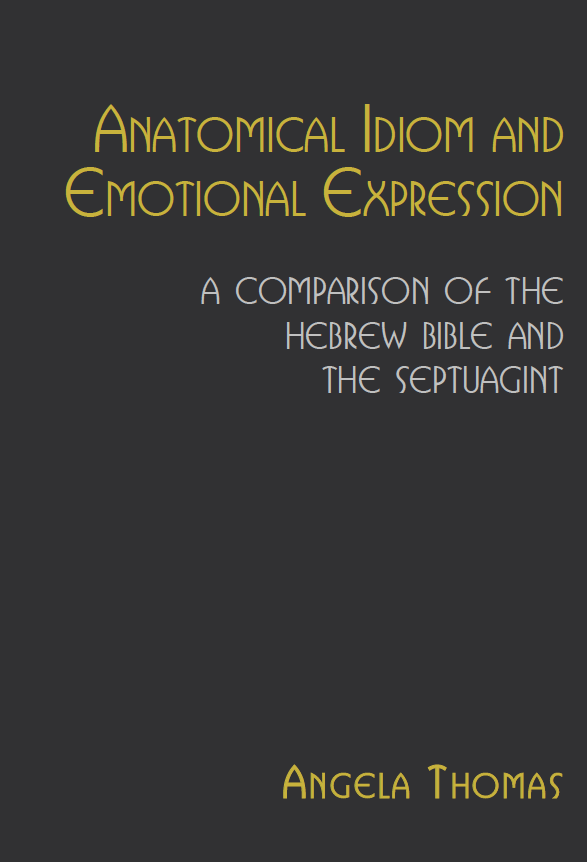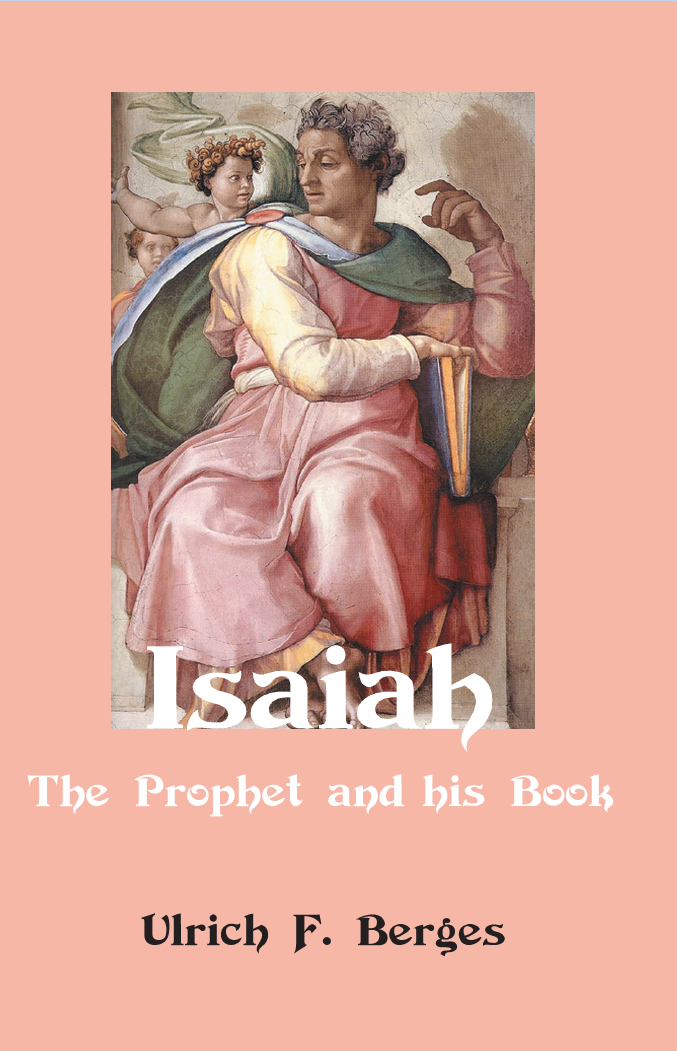Anatomical Idiom and Emotional Expression: A Comparison of the Hebrew Bible and the Septuagint
Published: May 2014
£75.00
The Hebrew Bible abounds in imagery linking feelings and emotions with various parts of the body. These vividly painted word pictures capture the imagination, and the reader can identify physically as well as emotionally with what is being expressed. But this colourful imagery, with its forthright and earthy language, is rather less apparent in modern English translations.
Such substitutions are not just common in English translations, but are also found in the first authorized translation of the Hebrew Bible, the Septuagint. Can the changes to body imagery found in English translations be explained as part of a process that began with the Greek text, which often gave a more muted picture than the Hebrew original?
This study explores these questions by making a detailed comparative analysis of anatomical idioms (body imagery) associated with the emotions of distress, fear, anger and gladness in the Hebrew Bible and the Septuagint. Differences are identified through literal translation into English from both Hebrew and Greek and the results are categorized, discussed and analysed, and detailed statistical information is presented. The data offer a rich resource for further research, and the analysis provides fascinating insights into the minds of the Greek translators and findings that are surprisingly complex.
Anatomical Idiom and Emotional Expression: A Comparison of the Hebrew Bible and the Septuagint
£75.00
The Hebrew Bible abounds in imagery linking feelings and emotions with various parts of the body. These vividly painted word pictures capture the imagination, and the reader can identify physically as well as emotionally with what is being expressed. But this colourful imagery, with its forthright and earthy language, is rather less apparent in modern English translations.
Such substitutions are not just common in English translations, but are also found in the first authorized translation of the Hebrew Bible, the Septuagint. Can the changes to body imagery found in English translations be explained as part of a process that began with the Greek text, which often gave a more muted picture than the Hebrew original?
This study explores these questions by making a detailed comparative analysis of anatomical idioms (body imagery) associated with the emotions of distress, fear, anger and gladness in the Hebrew Bible and the Septuagint. Differences are identified through literal translation into English from both Hebrew and Greek and the results are categorized, discussed and analysed, and detailed statistical information is presented. The data offer a rich resource for further research, and the analysis provides fascinating insights into the minds of the Greek translators and findings that are surprisingly complex.
Isaiah: The Prophet and His Book
Published: July 2012
£21.00
The book of Isaiah presents one of the most challenging pieces of literature in the Hebrew Bible. Over a period of some four hundred years (from the end of the eighth century down to the end of the fourth century BCE), the great prophet Isaiah and his disciples in the Assyrian period, as well as later scholars in Babylonian and Persian times, worked on this marvellous prophetic text. In its final form it resembles a mediaeval cathedral constructed by many gifted people across the centuries. Each piece has its own history, place and function in the whole structure.
In this lucid study, Berges interprets the scroll of Isaiah as a 'literal cathedral', written by many hands and empowered by the experience of sorrow and disaster, liberation and joy. In the centre of the book (Isaiah 36 —39) and of its theology stands the threat and redemption of Zion. The nations that in the first part were taking action against God's city are invited to join the exiled and dispersed people of Israel as it travels home. The reader too is called to journey the same path and to join the congregation of Israel and the nations on their way to the New Jerusalem — not in heaven but on a renewed earth.
Methodologically, the book combines synchronic and diachronic perspectives and paves the way to a fruitful conversation between them. The vast reception history of the Book of Isaiah in the Septuagint, the New Testament, and in rabbinic and Christian traditions, as well as in painting and music, is also illustrated by some of the most illuminating examples.
Isaiah: The Prophet and His Book
£21.00
The book of Isaiah presents one of the most challenging pieces of literature in the Hebrew Bible. Over a period of some four hundred years (from the end of the eighth century down to the end of the fourth century BCE), the great prophet Isaiah and his disciples in the Assyrian period, as well as later scholars in Babylonian and Persian times, worked on this marvellous prophetic text. In its final form it resembles a mediaeval cathedral constructed by many gifted people across the centuries. Each piece has its own history, place and function in the whole structure.
In this lucid study, Berges interprets the scroll of Isaiah as a 'literal cathedral', written by many hands and empowered by the experience of sorrow and disaster, liberation and joy. In the centre of the book (Isaiah 36 —39) and of its theology stands the threat and redemption of Zion. The nations that in the first part were taking action against God's city are invited to join the exiled and dispersed people of Israel as it travels home. The reader too is called to journey the same path and to join the congregation of Israel and the nations on their way to the New Jerusalem — not in heaven but on a renewed earth.
Methodologically, the book combines synchronic and diachronic perspectives and paves the way to a fruitful conversation between them. The vast reception history of the Book of Isaiah in the Septuagint, the New Testament, and in rabbinic and Christian traditions, as well as in painting and music, is also illustrated by some of the most illuminating examples.
The Other Face of God: ‘I Am That I Am’ Reconsidered
Published: Feb 2012
£75.00
'I am that I am' (Exodus 3.14) has been an exegetical puzzle to many generations of biblical scholars as well as theologians: is it about the present or the future, is it about God's presence or his hiddenness? Den Hertog argues that such exegetical questions have been framed too narrowly, and that this deeply suggestive statement about God needs to be set in a broader context.
Firstly, the statement must be understood within the narrative of Moses's call as an answer to his problem: how can his being launched on a radically new, prophetic mission be reconciled with the features of the God of the patriarchs? This book
substantiates the view that the meaning of the statement is deliberately indefinite: 'I may be who I may be'. In its context, it points to Yhwh’s other face, the possibility of his manifesting himself differently from the way he is thought to be.
Secondly, the after-history of this text should also be considered, since it has shaped our understanding in one way or another. This book pays particular attention to the renderings by the ancient and early modern versions (including the King James Version). The point of departure is the Septuagint rendering 'I am the one being', which has traditionally been associated with the Greek philosophical concept of absolute Being. This rendering, however, appears to have originally signified God's active presence: 'I am the one who shows himself to be there'.
Thirdly, this fundamental theological statement invites further a psychoanalytic interpretation. Den Hertog adopts a Lacanian perspective, according to which 'I am that I am' represents an irruption of an 'I' from nowhere, from beyond usual thought and expectation. In its context this means that in a situation of crisis a new orientation is born, one that undermines the pharaonic powers.
The Other Face of God: ‘I Am That I Am’ Reconsidered
£75.00
'I am that I am' (Exodus 3.14) has been an exegetical puzzle to many generations of biblical scholars as well as theologians: is it about the present or the future, is it about God's presence or his hiddenness? Den Hertog argues that such exegetical questions have been framed too narrowly, and that this deeply suggestive statement about God needs to be set in a broader context.
Firstly, the statement must be understood within the narrative of Moses's call as an answer to his problem: how can his being launched on a radically new, prophetic mission be reconciled with the features of the God of the patriarchs? This book
substantiates the view that the meaning of the statement is deliberately indefinite: 'I may be who I may be'. In its context, it points to Yhwh’s other face, the possibility of his manifesting himself differently from the way he is thought to be.
Secondly, the after-history of this text should also be considered, since it has shaped our understanding in one way or another. This book pays particular attention to the renderings by the ancient and early modern versions (including the King James Version). The point of departure is the Septuagint rendering 'I am the one being', which has traditionally been associated with the Greek philosophical concept of absolute Being. This rendering, however, appears to have originally signified God's active presence: 'I am the one who shows himself to be there'.
Thirdly, this fundamental theological statement invites further a psychoanalytic interpretation. Den Hertog adopts a Lacanian perspective, according to which 'I am that I am' represents an irruption of an 'I' from nowhere, from beyond usual thought and expectation. In its context this means that in a situation of crisis a new orientation is born, one that undermines the pharaonic powers.



